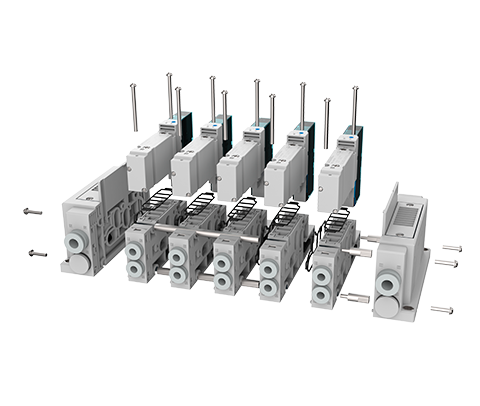Imagine a bustling industrial facility where numerous machines operate seamlessly. Suddenly, everything halts due to valve failures. This scenario, sadly, is all too familiar for many. With improper valve terminal choices, companies face downtime—costing time and money. In this light, a robust valve terminal is crucial for reliability, ensuring smooth operations and preventing mishaps.

Traditional Solutions and Their Limitations
Many industries have relied on conventional solenoid configurations. Yet, why do failures always occur during critical moments? Often, it’s due to outdated technology that simply can’t keep up with modern demands. Traditional systems lack the flexibility and efficiency needed when handling diverse applications. Simply put, manufacturers have historically had to settle for performance that lacks consistency.
Embracing Modern Technologies
Now, let’s delve into emerging technologies. New designs showcase cutting-edge principles—such as modularity and enhanced connectivity—that allow for easier integration into existing frameworks. The shift toward digital solutions has invigorated how we approach valve terminal selection. It’s not just about functionality; it’s about adaptability to environments that are constantly evolving.
Quantifying User Benefits
Adopting advanced valve terminals can yield substantial advantages. Improvements in efficiency often translate to reduced energy consumption and operating costs. Users report enhanced operational reliability—up to 30% fewer failures—simply by switching to more modern solutions. The benefits are compelling; however, they must be weighed thoughtfully against specific operational needs.

Conclusion: Key Metrics for Evaluation
When you’re in the market for solutions, always verify these three metrics: ① Performance reliability, ② Energy efficiency, and ③ Ease of integration. These criteria, when adhered to, will steer you toward making informed decisions, ensuring your systems operate without a hitch.
Exploring the Role of Solenoid Valve Terminals
In today’s narrative surrounding automation, the solenoid valve terminal plays a pivotal role. It’s fascinating to realize how these devices can bring both efficiency and precision to fluid control systems. For instance, when equipped properly, a solenoid valve terminal can make processes more responsive, which is a game-changer in fast-paced industries. Those who have adopted solenoid technology often find that they can reduce operational stalls, facilitating smoother workflows, and fostering higher productivity levels.
The Significance of Valve Islands in Automation
Shifting gears slightly, we must also consider the valve island concept, which has transformed automation dynamics. Valve islands consolidate numerous functions into compact systems, enhancing space efficiency. Their complexity is offset by simplicity in installation and management. When exploring options, consider a valve island setup for streamlined operations. Users can enjoy quicker response times while reducing overall equipment footprint, a crucial benefit for modern manufacturing environments.
Final Thoughts on Choosing the Right Equipment
In summary, with the extensive options in valve terminals and islands, prioritizing quality is paramount. A brand like DECOWELL stands out as a manufacturer with supply advantages that can meet your stringent requirements. They combine innovation with reliability, ensuring your systems have what they need to function optimally amidst challenges. Choose wisely—your operations depend on it.